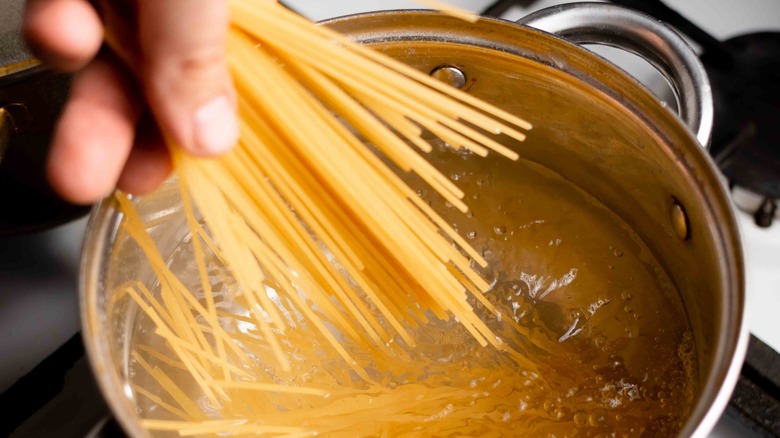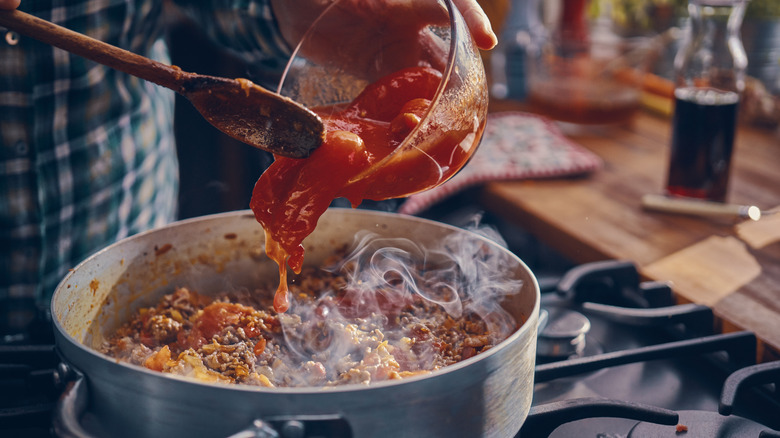Why Timing Matters When Boiling Pasta
The hallmark of a great pasta is its simplicity: noodles and sauce. When there are so few ingredients, technique is important to make sure the flavors and textures of your pasta dish come together harmoniously. One common issue cooks face is pasta noodles sticking together before saucing. Say you've boiled your noodles in salted water, and your sauce isn't quite ready, so you let your noodles sit after you've drained them. When you're ready to toss your pasta in the sauce, you might find a clumpy mass of spaghetti in your colander. Timing when you cook and sauce your noodles is key to preventing them from sticking together.
The typical pasta-making method involves cooking your pasta in salted water, adding your pasta to a sauce, and then finishing your pasta in the sauce. It's important to sauce your noodles immediately after you've drained them so the pasta sticks to the sauce and not each other. Heat your sauce separately so it's to temperature and ready to mix with your noodles the moment you remove them from the water. Timing this crucial step avoids the hassle of mixing a starchy blob of noodles with sauce when it's time to eat.
Don't cook the pasta too early
Timing when you cook and sauce your pasta is crucial because a lot of tips and conventional hacks to prevent pasta sticking don't actually address the problem head-on. Pasta sticks together because of starch. When a noodle is cooked, there's starch on the outside of it. When you allow cooked pasta to sit, the noodles stick together because the starch on the outside almost glues them together. But that starch also helps sauce stick.
One misguided kitchen tip is rinsing your pasta after cooking. However, here, you're also rinsing off the starch that's so necessary for sauce to stick to your pasta. You may have heard that throwing in a splash of olive oil will keep your noodles lubricated and avoid having them stick together. This keeps your noodles from sticking to each other, but will prevent the sauce from sticking to the pasta as well.
Another common trick is adding oil to the pasta cooking water. However, in this method, the oil sits at the top of the water and doesn't coat the noodles anyway. While your pasta cooks, stirring it within the first couple minutes will prevent noodle clumping during this step. The best method is to sauce your pasta as soon as possible for a delicious dish without the clumpy mess.

